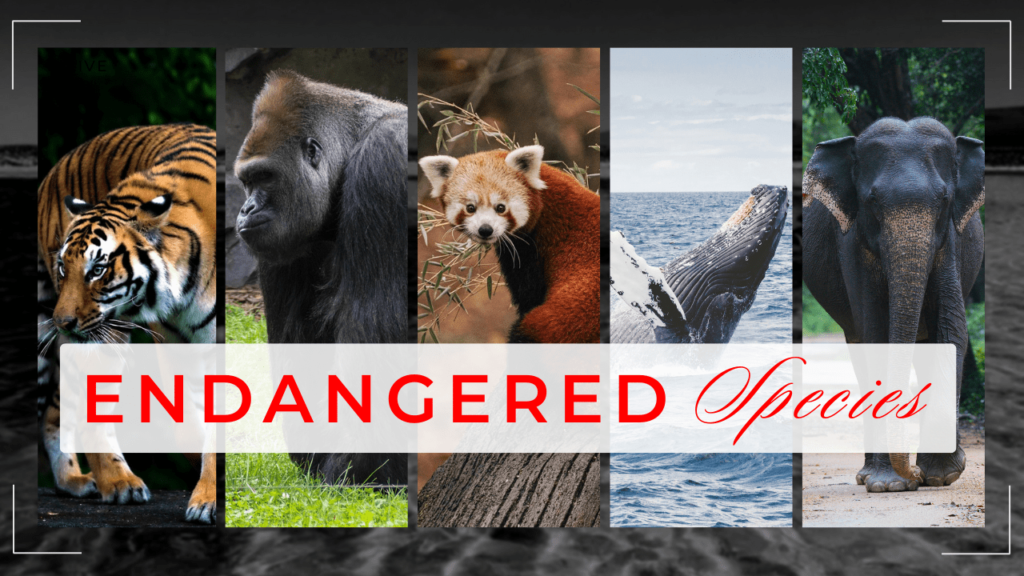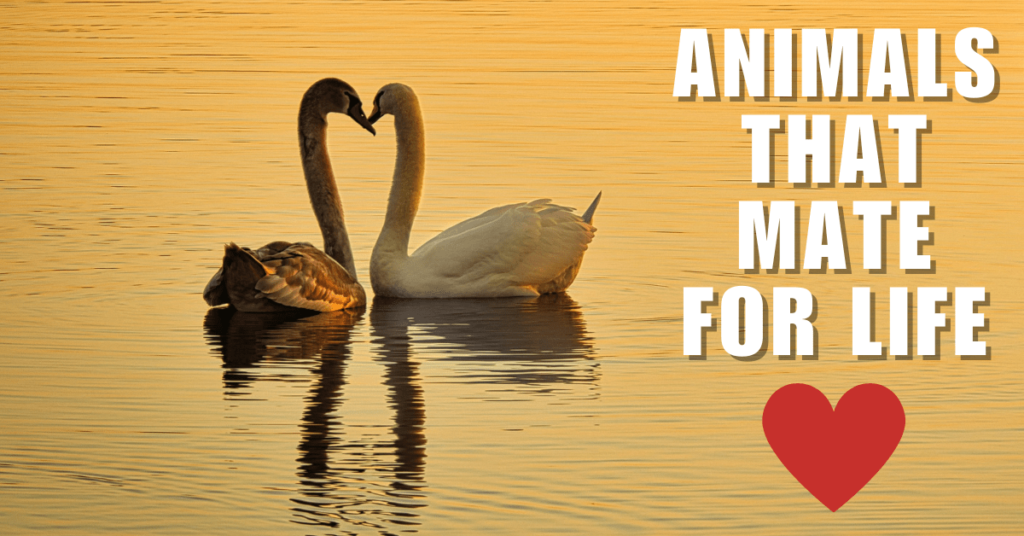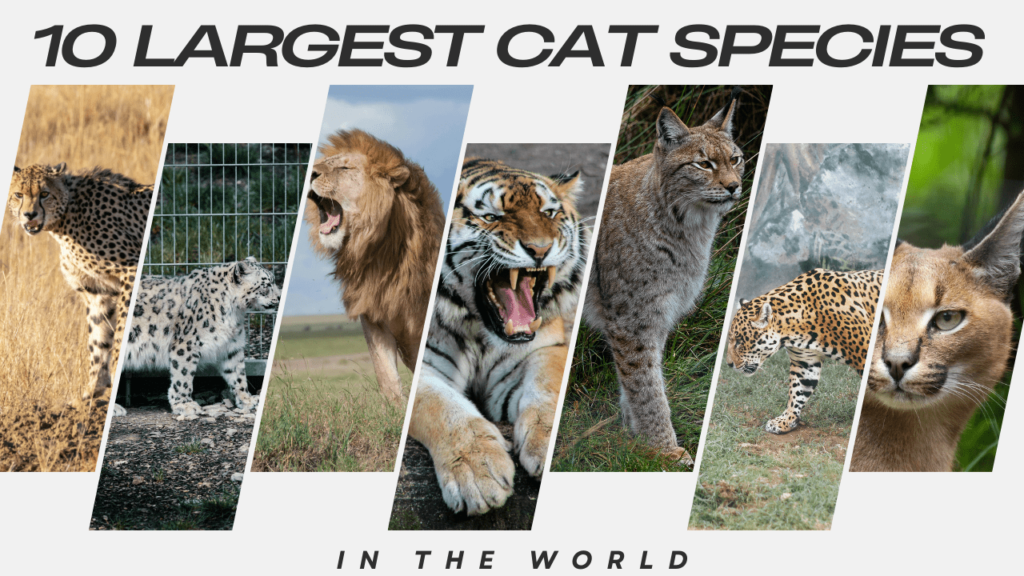Current State of Endangered Species
The natural world is facing an unprecedented crisis, with an alarming number of species teetering on the brink of extinction. Endangered species are those that are at significant risk of disappearing entirely from the planet, either due to natural causes or, more commonly, human activities. As ecosystems across the globe undergo rapid changes, the survival of countless species hangs in the balance. The decline in biodiversity not only affects the animals and plants directly but also has far-reaching implications for the health of our planet and the well-being of human societies. Understanding the current state of endangered species and the factors contributing to their decline is crucial in the fight to preserve the Earth’s rich biodiversity.
What Does “Endangered Species” Mean?
Endangered species are defined as those that are at a very high risk of extinction in the wild. According to the International Union for Conservation of Nature (IUCN), a species is classified as endangered when its population has decreased by at least 50% over the last decade or its natural habitat has been reduced to such an extent that its survival is in jeopardy. These species are placed on the IUCN Red List, which serves as a global inventory of the conservation status of species, highlighting those that require urgent protection and conservation efforts.
What Does “Critically Endangered Species” Mean?
Critically Endangered species represent the highest risk category assigned by the IUCN for wild species. These species face an extremely high risk of extinction in the immediate future. The criteria for a species to be listed as Critically Endangered include a population decline of more than 80% over the last ten years, a reduction in its habitat, or a population size of fewer than 50 mature individuals. The difference between endangered and critically endangered species is the severity of the threat, with critically endangered species being one step closer to extinction.
What Does “Vulnerable Species” Mean?
A species classified as Vulnerable by the IUCN is at a high risk of endangerment in the medium term. While not as immediately at risk as endangered or critically endangered species, vulnerable species are nonetheless facing significant threats that could push them towards extinction if protective measures are not implemented. Factors leading to this classification include a population reduction of at least 30% over ten years, a severely fragmented habitat, or a restricted area of occupancy.
Importance of Conservation and the Role of Awareness in Protecting These Species
Conservation efforts are vital for the protection of endangered species and the ecosystems they inhabit. By preserving biodiversity, we maintain the balance of ecosystems that provide essential services such as clean air, water, and food. Raising awareness about the plight of endangered species plays a crucial role in these conservation efforts. Public education and involvement can lead to stronger support for conservation policies, increased funding for protection programs, and more responsible consumer choices that reduce human impact on wildlife. In essence, awareness acts as a catalyst for action, helping to ensure that endangered species are not lost forever. By monitoring the Endangered Animals Status, we can track the recovery progress of species.
Check out the list of Extinct Animals that cannot be resurrected.
Common Themes Across Endangered Species
Why Do Species Become Endangered?
Species become endangered for a variety of reasons, often as a direct result of human activities. The most common causes include:
- Habitat Loss: The destruction, fragmentation, or alteration of habitats due to urbanization, agriculture, deforestation, and industrial activities is the leading cause of species endangerment.
- Poaching and Illegal Wildlife Trade: The illegal hunting and trade of animals for their parts, such as ivory, fur, or as exotic pets, have driven many species to the brink of extinction.
- Climate Change: Global warming and changing climate patterns disrupt habitats and food sources, making survival increasingly difficult for many species.
- Pollution: Contamination of air, water, and soil with pollutants such as pesticides, plastics, and industrial waste harms wildlife and their habitats.
- Invasive Species: The introduction of non-native species into an ecosystem can lead to competition for resources, predation, and the spread of diseases, often to the detriment of native species.
Global Efforts to Protect Endangered Species
The global community has recognized the urgent need to protect endangered species and has implemented various initiatives to address this crisis. Key efforts include:
- International Treaties: The Convention on International Trade in Endangered Species of Wild Fauna and Flora (CITES) regulates the trade of endangered species and their products to ensure that it does not threaten their survival.
- Protected Areas: Establishing national parks, wildlife reserves, and marine protected areas provides safe havens for endangered species, allowing them to thrive without the pressures of human activities.
- Breeding Programs: Captive breeding and reintroduction programs help to boost the populations of critically endangered species and reintroduce them into their natural habitats.
- Public Awareness Campaigns: Educating the public about the importance of biodiversity and the threats to endangered species encourages more sustainable practices and supports conservation efforts.
- Conservation Legislation: Laws such as the Endangered Species Act in the United States provide legal protection for species at risk and impose penalties for activities that harm them.
Many species have experienced changes in their conservation status. Some have transitioned from Endangered to no longer being endangered, while others have moved from Endangered to Vulnerable or Near Threatened.
Unfortunately, some species have deteriorated from Endangered to Critically Endangered or even Extinct.
Explore the changes in Endangered Species Status to understand both the successes and setbacks in conservation efforts.
Top 15 Endangered Species/Animals
1. Asian Elephant
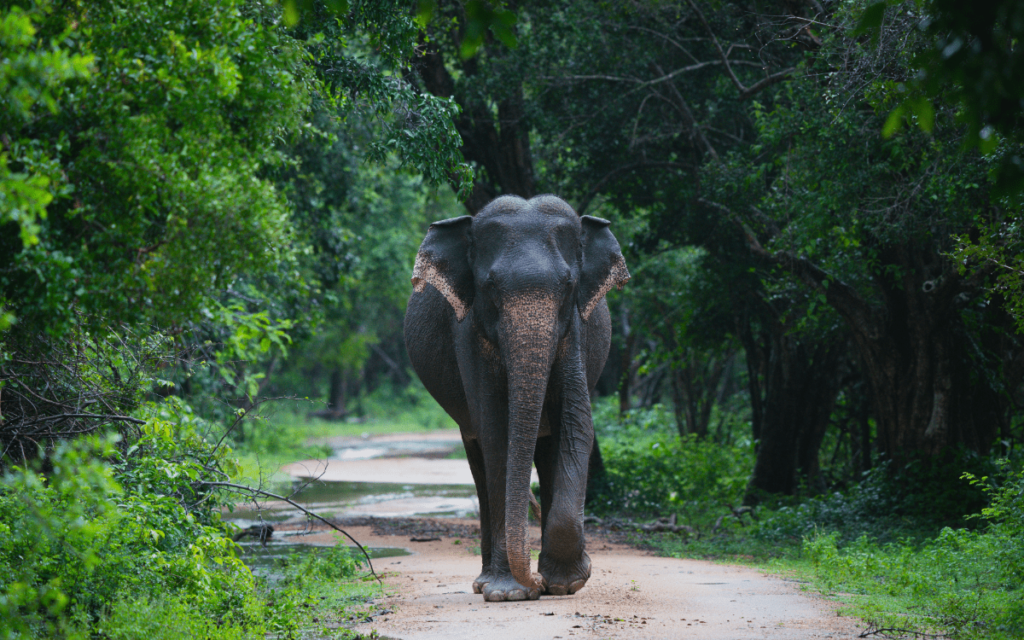
- Description: The Asian elephant is a majestic and intelligent mammal, smaller than its African counterpart, with rounded ears and a prominent twin-domed head. Revered in many cultures across Asia, these elephants are known for their close-knit social structures and their significant role in forest ecosystems as seed dispersers. They exhibit complex behaviors, including mourning for lost companions, and showcasing their deep emotional bonds and cognitive abilities.
- Scientific Name: Elephas maximus
- Family Name: Elephantidae
- Type: Mammal
- Habitat: Tropical and subtropical forests, grasslands, and scrublands across Southeast Asia, including India and Sri Lanka.
- Diet: Herbivore; mainly grasses, but also leaves, fruits, and bark.
- Conservation Status: Endangered
- Threats: The Asian elephant faces severe threats from habitat loss due to deforestation, human encroachment, and agricultural expansion. The fragmentation of their habitats forces them into smaller, isolated populations, which leads to inbreeding and reduces genetic diversity. Human-wildlife conflict is also significant, as elephants often raid crops, leading to retaliation by farmers. Additionally, poaching for ivory, although less common than in African elephants, still poses a danger.
- Current Population Estimates: Approximately 40,000 to 50,000.
- Conservation Efforts: Conservation efforts include habitat restoration and the establishment of wildlife corridors to connect fragmented habitats. Anti-poaching measures, including patrols and stricter enforcement of wildlife protection laws, are crucial in reducing illegal killings. Community-based conservation initiatives aim to mitigate human-elephant conflict by promoting coexistence strategies such as the use of chili fences and beehive barriers. Elephant sanctuaries and captive breeding programs also play a role in their conservation.
Check out our article on How Strong Is an Elephant?
2. Blue Whale

- Description: The blue whale is the largest animal on the planet, an awe-inspiring marine mammal that can reach lengths of up to 100 feet and weigh as much as 200 tons. Despite its enormous size, it primarily feeds on tiny krill, consuming up to 4 tons per day during feeding seasons. Known for its deep, resonating calls that travel vast distances underwater, the blue whale plays a critical role in maintaining the health of marine ecosystems.
- Scientific Name: Balaenoptera musculus
- Family Name: Balaenopteridae
- Type: Mammal
- Habitat: Open oceans worldwide, particularly in polar and temperate waters.
- Diet: Carnivore; primarily krill and small fish.
- Conservation Status: Endangered
- Threats: The blue whale was driven to near extinction by commercial whaling in the 20th century, and although hunting has largely ceased, their populations remain vulnerable. They are still threatened by ship strikes, entanglement in fishing gear, and the impacts of climate change, which affect krill populations and thus their primary food source. Noise pollution from shipping and industrial activities also disrupts their communication and navigation.
- Current Population Estimates: Approximately 10,000 to 25,000.
- Conservation Efforts: International whaling bans have been crucial in preventing further declines, and ongoing monitoring of blue whale populations helps track their recovery. Marine protected areas are established in critical habitats to reduce the risk of ship strikes and fishing gear entanglements. Efforts are also made to reduce noise pollution through regulations on shipping lanes and industrial activities in key whale habitats.
3. African Wild Dog
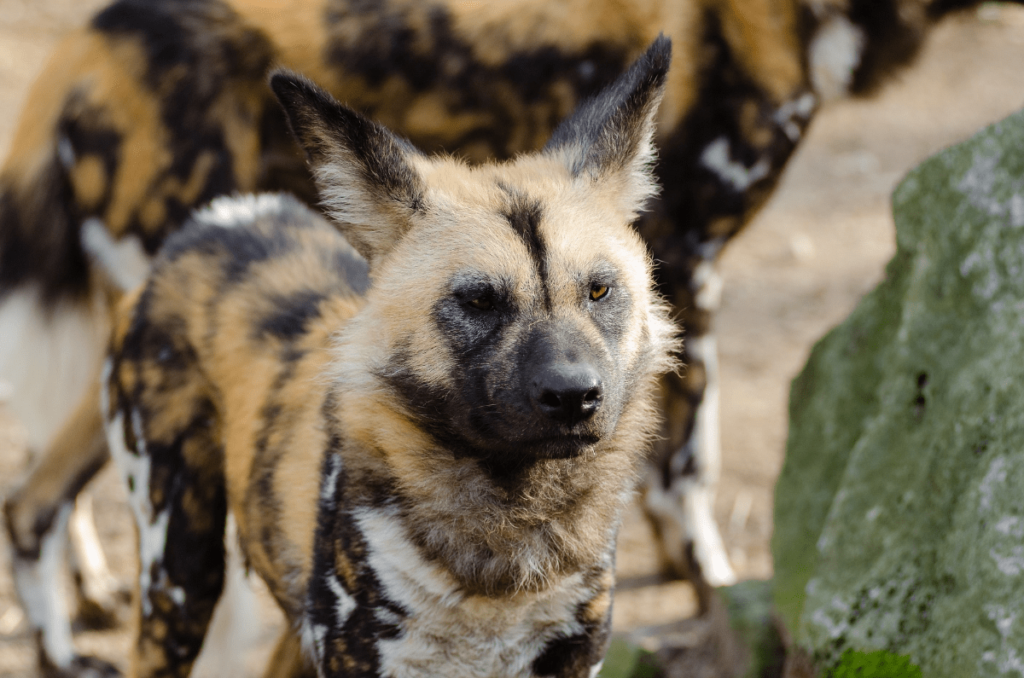
- Description: The African wild dog is a highly social and cooperative predator, known for its endurance and strategic hunting techniques. These dogs are easily recognized by their patchy, multicolored fur and large, rounded ears, which aid in thermoregulation and communication within the pack. They are one of the most efficient hunters in the animal kingdom, often chasing down prey with remarkable speed and coordination.
- Scientific Name: Lycaon pictus
- Family Name: Canidae
- Here is a list of all Animals that belong to the Canidae Family.
- Type: Mammal
- Habitat: Savannas, grasslands, and open woodlands across sub-Saharan Africa.
- Diet: Carnivore; primarily medium-sized ungulates such as impalas and gazelles.
- Conservation Status: Endangered
- Threats: The African wild dog is primarily threatened by habitat fragmentation due to expanding human settlements and agricultural activities, which isolate populations and reduce genetic diversity. They are also highly susceptible to diseases like rabies and canine distemper, often contracted from domestic dogs. Human-wildlife conflict poses a significant threat, as wild dogs are often killed by farmers who view them as a danger to livestock. Additionally, road accidents frequently result in fatalities as these animals travel long distances in search of prey.
- Current Population Estimates: Fewer than 6,000 individuals.
- Conservation Efforts: Conservation efforts include the creation of wildlife corridors that reconnect fragmented habitats, allowing for the free movement of wild dogs between protected areas. Vaccination programs for domestic dogs are crucial in reducing the transmission of diseases to wild populations. Community-based conservation initiatives educate local populations on the importance of wild dogs to the ecosystem and promote livestock management practices that reduce conflict. Anti-poaching patrols and the use of GPS collars for tracking and monitoring are also key components of their conservation strategy.
4. Chimpanzee
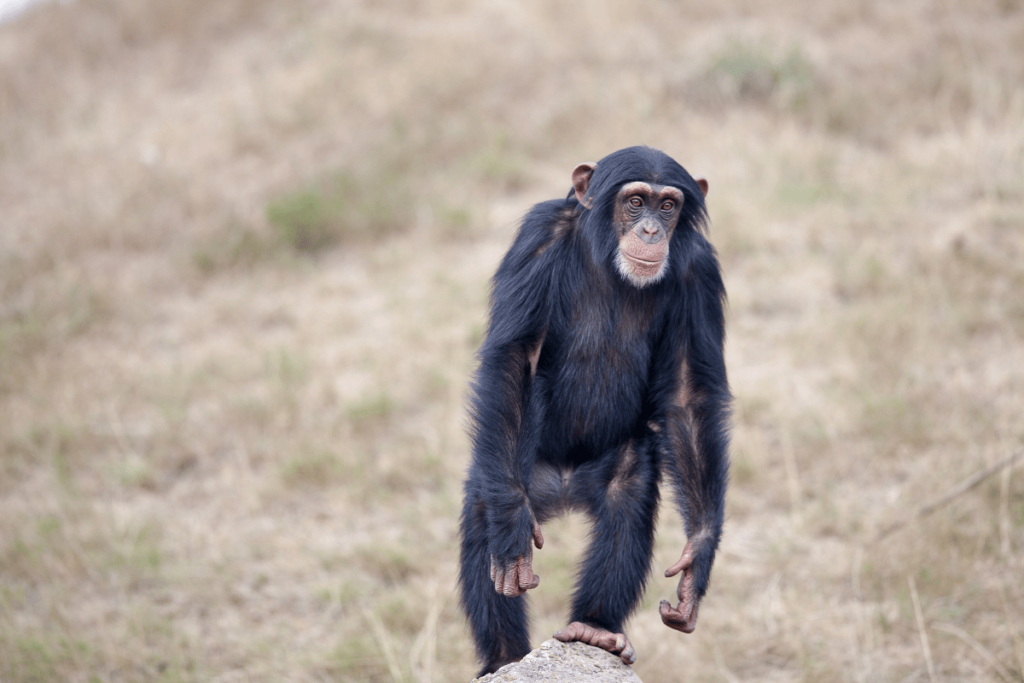
- Description: The chimpanzee is one of our closest living relatives, sharing approximately 98% of our DNA. These highly intelligent primates are known for their complex social structures, use of tools, and ability to learn and communicate through a variety of vocalizations and gestures. Chimpanzees play a crucial role in their ecosystems by dispersing seeds and helping maintain the diversity of their habitats.
- Scientific Name: Pan troglodytes
- Family Name: Hominidae
- Type: Mammal
- Habitat: Tropical rainforests, woodlands, and savannas across Central and West Africa.
- Diet: Omnivore; primarily fruit, but also leaves, seeds, insects, and occasionally small mammals.
- Conservation Status: Endangered
- Threats: Chimpanzees face severe threats from habitat destruction due to logging, agriculture, and human settlement. Poaching is also a significant threat, as chimpanzees are hunted for bushmeat and captured for the illegal pet trade. Additionally, diseases such as Ebola have devastated certain populations, further endangering these primates. Human-wildlife conflict arises when chimpanzees raid crops, leading to retaliatory killings by farmers.
- Current Population Estimates: Estimated at fewer than 300,000 individuals.
- Conservation Efforts: Conservation efforts include the protection of chimpanzee habitats through the establishment of national parks and reserves. Anti-poaching measures, including patrolling and stricter enforcement of wildlife protection laws, are essential in reducing illegal hunting. Public awareness campaigns and educational programs aim to reduce demand for bushmeat and discourage the illegal pet trade. In some regions, rehabilitation centers have been established to care for orphaned or rescued chimpanzees, with the goal of eventually reintroducing them into the wild.
Chimpanzees are known as one of the Smartest Animals in the World
5. Galápagos Penguin
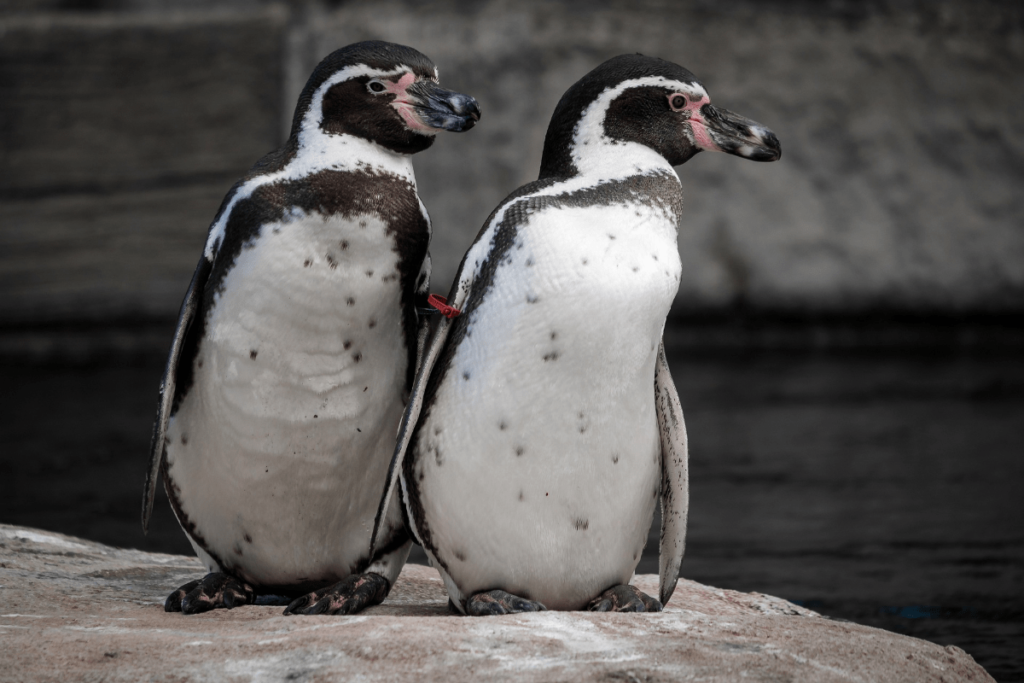
- Description: The Galápagos penguin is the only penguin species that lives north of the equator, and it has adapted remarkably well to the warmer climate of the Galápagos Islands. These small, agile birds are expert swimmers, using their wings like flippers to navigate through the water in pursuit of fish. Despite their small size, Galápagos penguins play a significant role in the marine ecosystems of their island home.
- There are over 19 Fascinating Types of Penguins Around the World, and Galápagos penguins are one of them.
- Scientific Name: Spheniscus mendiculus
- Family Name: Spheniscidae
- Type: Bird
- Habitat: Coastal regions of the Galápagos Islands, particularly on Fernandina and Isabela islands.
- Diet: Carnivore; primarily small fish, squid, and crustaceans.
- Conservation Status: Endangered
- Threats: The Galápagos penguin is highly vulnerable to climate change, which affects ocean currents and, consequently, the availability of food. El Niño events can drastically reduce food supply, leading to starvation and reduced breeding success. Human activities, including fishing and tourism, also pose significant threats, as they can lead to habitat degradation and increased pollution. Introduced species, such as rats and cats, prey on penguin eggs and chicks, further threatening their survival.
- Current Population Estimates: Fewer than 2,000 individuals.
- Conservation Efforts: Conservation efforts focus on protecting the penguins’ habitat through the regulation of fishing and tourism activities in the Galápagos Islands. Efforts to control and eradicate introduced species, such as rats and cats, are also critical in ensuring the survival of penguin chicks. Climate change mitigation strategies, including the protection of marine environments and the establishment of marine reserves, aim to preserve the penguins’ food sources. Research and monitoring programs help track population trends and assess the effectiveness of conservation measures.
6. Green Turtle
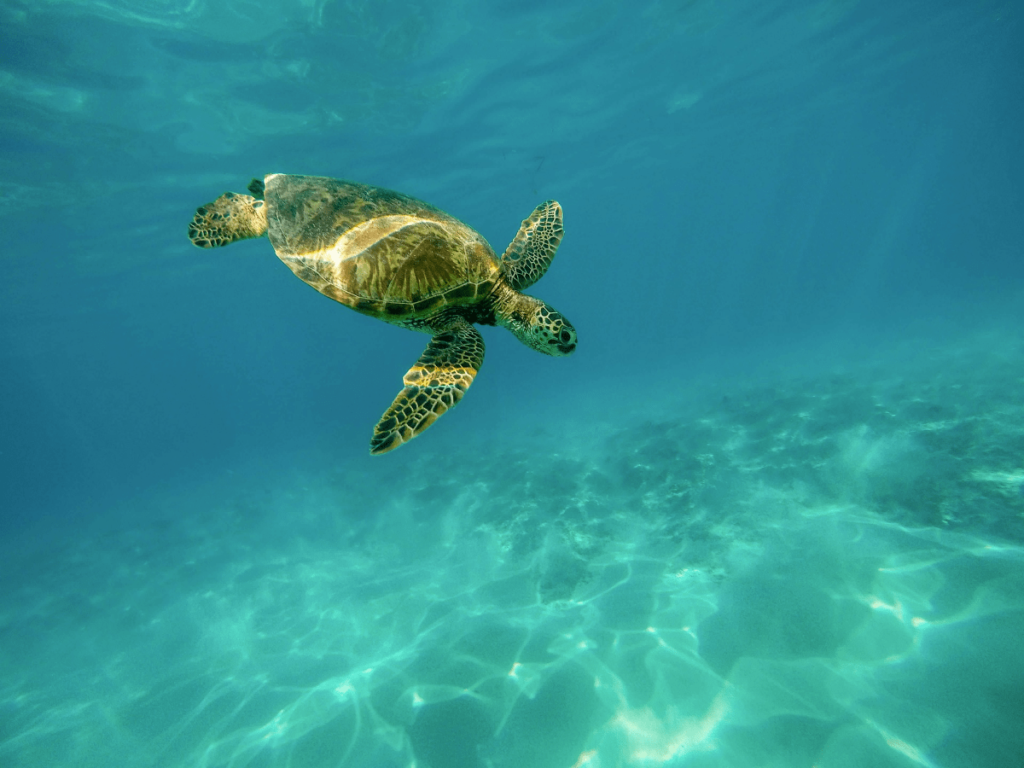
- Description: The green turtle is a large sea turtle species named for the greenish color of its fat, which is derived from its herbivorous diet. These turtles are known for their long migrations between feeding grounds and nesting sites, often traveling thousands of miles across the ocean. Green turtles play a vital role in marine ecosystems by maintaining healthy seagrass beds, which provide habitat for a variety of marine species.
- Scientific Name: Chelonia mydas
- Family Name: Cheloniidae
- Type: Reptile
- Habitat: Tropical and subtropical oceans worldwide, particularly near coral reefs and seagrass beds.
- Diet: Herbivore; primarily seagrass and algae.
- Conservation Status: Endangered
- Threats: Green turtles face numerous threats, including habitat loss due to coastal development, pollution, and climate change. Beachfront construction and rising sea levels reduce the availability of suitable nesting sites. Bycatch in fishing gear, particularly trawls, longlines, and gillnets, leads to the accidental capture and drowning of turtles. Poaching for their eggs, meat, and shells also remains a significant threat, particularly in regions where turtle products are highly valued. Additionally, the ingestion of marine debris, particularly plastic, poses a severe threat to their health.
- Current Population Estimates: Estimates vary widely, with some populations numbering in the tens of thousands, while others are critically low.
- Conservation Efforts: Conservation efforts include the protection of nesting beaches through the establishment of marine protected areas and the regulation of coastal development. Turtle Excluder Devices (TEDs) are required on shrimp trawlers in many regions to reduce bycatch. Public awareness campaigns aim to reduce demand for turtle products and promote the importance of marine conservation. In some areas, community-based initiatives involve local residents in monitoring and protecting nesting sites, as well as rehabilitating injured turtles.
7. Mountain Gorilla
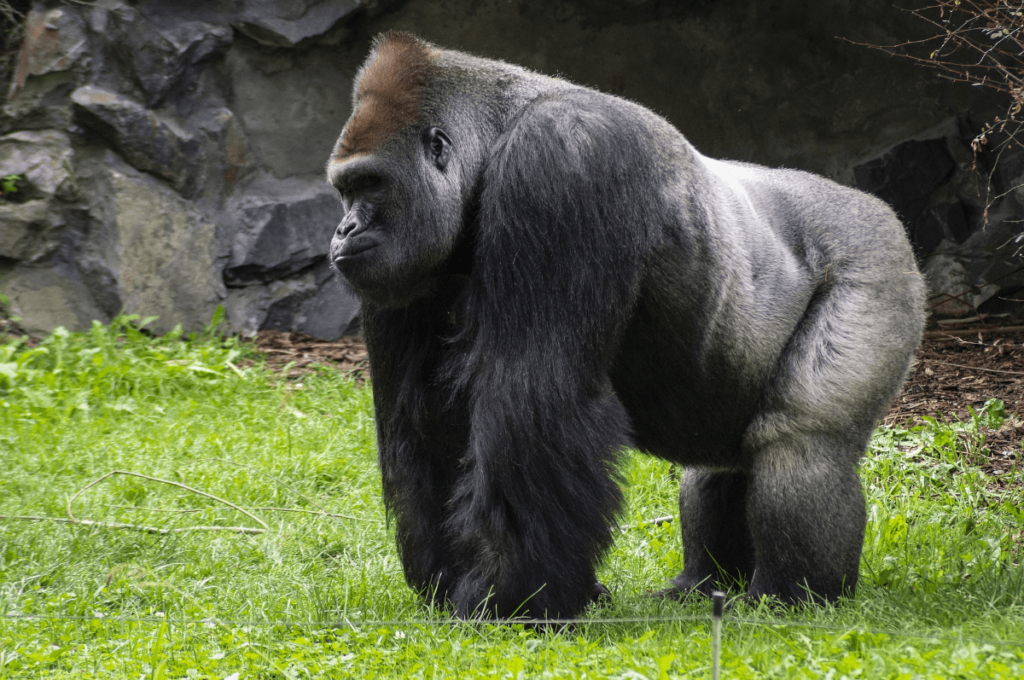
- Description: The mountain gorilla is a large and powerful primate, known for its thick, long fur that allows it to survive in the cold temperatures of its mountainous habitat. These gorillas live in tight-knit family groups led by a dominant silverback male, who is responsible for the protection and leadership of the group. Mountain gorillas are herbivores, feeding on a variety of plants, leaves, and fruits found in their forested environment.
- Scientific Name: Gorilla beringei beringei
- Family Name: Hominidae
- Type: Mammal
- Habitat: Montane and bamboo forests in the Virunga Mountains of Central Africa.
- Diet: Herbivore; primarily leaves, shoots, and fruit.
- Conservation Status: Endangered
- Threats: Mountain gorillas face severe threats from habitat loss due to agriculture, human settlement, and illegal logging. Poaching, although rare, remains a threat, particularly for the illegal pet trade and bushmeat markets. Human-wildlife conflict also poses a significant danger, as gorillas sometimes raid crops, leading to retaliatory killings by farmers. Diseases such as Ebola and respiratory infections can spread rapidly among gorilla populations, often with devastating effects.
- Current Population Estimates: Approximately 1,000 individuals.
- Conservation Efforts: Conservation efforts include the protection of gorilla habitats through the establishment of national parks and reserves. Anti-poaching patrols and stricter enforcement of wildlife protection laws are essential in reducing illegal hunting. Public awareness campaigns and educational programs aim to reduce human-gorilla conflict by promoting coexistence strategies and the importance of gorillas to the ecosystem. In some regions, gorilla tourism has been developed as a sustainable source of income for local communities, providing an incentive to protect these endangered animals.
8. Monarch Butterfly
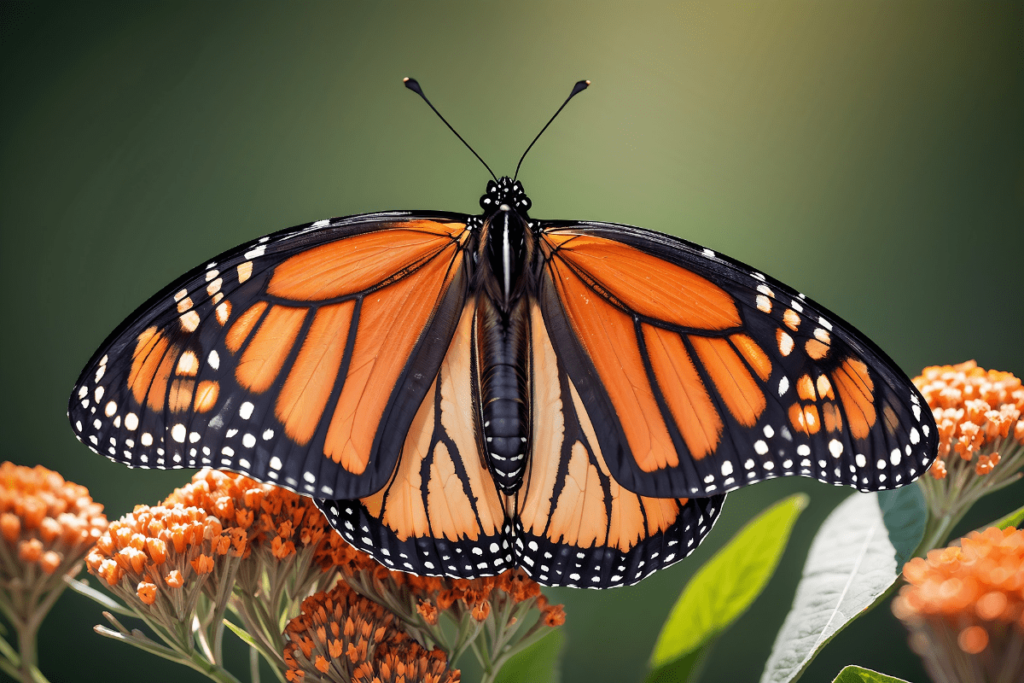
- Description: The Monarch butterfly is renowned for its remarkable migration journey from North America to central Mexico. These butterflies are easily recognizable by their vibrant orange and black wing patterns. Monarchs are vital pollinators and their migration is one of nature’s most impressive phenomena.
- Scientific Name: Danaus plexippus
- Family Name: Nymphalidae
- Type: Insect
- Habitat: Various habitats including milkweed fields, meadows, and forest clearings.
- Diet: Caterpillars feed on milkweed; adults feed on nectar from flowers.
- Conservation Status: Vulnerable
- Threats: Habitat loss due to agricultural expansion, pesticide use, and climate change affecting migratory patterns.
- Current Population Estimates: Estimates suggest significant declines; fewer than 30 million individuals in the latest counts.
- Conservation Efforts: Habitat restoration, planting milkweed and nectar plants, and advocacy for pesticide reduction.
9. Red Panda
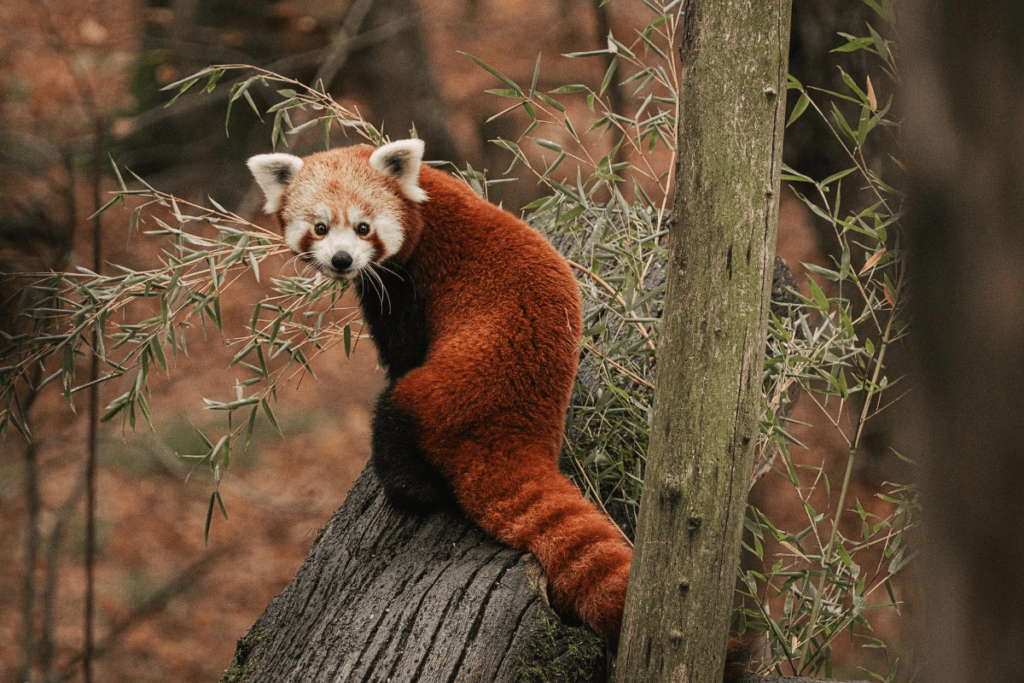
- Description: The red panda, often referred to as the lesser panda, is a small arboreal mammal native to the temperate forests of the eastern Himalayas and southwestern China. With its reddish-brown fur, bushy tail, and distinctive facial markings, the red panda is adapted to a bamboo-based diet but also consumes fruits, acorns, and insects.
Check out What Do Pandas Eat in the Wild vs. Zoos?
- Scientific Name: Ailurus fulgens
- Family Name: Ailuridae
- Type: Mammal
- Habitat: Temperate forests in the Himalayas and southwestern China.
- Diet: Herbivore; bamboo, fruits, acorns, and insects.
- Conservation Status: Endangered
- Threats: Habitat loss due to deforestation, poaching, and climate change.
- Current Population Estimates: Fewer than 10,000 individuals.
- Conservation Efforts: Protected areas, anti-poaching measures, and habitat restoration projects.
Check out the Conservation Status of Pandas.
10. Sea Lion

- Description: Sea lions are pinnipeds known for their agility in the water and their playful behavior. They have external ear flaps and can “walk” on land by rotating their hind flippers forward. Sea lions are found along coastlines in the northern and southern hemispheres and are crucial for marine ecosystems.
- Scientific Name: Zalophus spp.
- Family Name: Otariidae
- Type: Mammal
- Habitat: Coastal regions, including beaches and rocky shores.
- Diet: Carnivore; primarily fish and squid.
- Conservation Status: Various species, some are Endangered.
- Threats: Pollution, habitat destruction, entanglement in fishing gear, and hunting.
- Current Population Estimates: Variable by species; overall estimates suggest several hundred thousand.
- Conservation Efforts: Marine protected areas, legislation to reduce bycatch, and rehabilitation centers for injured animals.
11. Sea Turtle
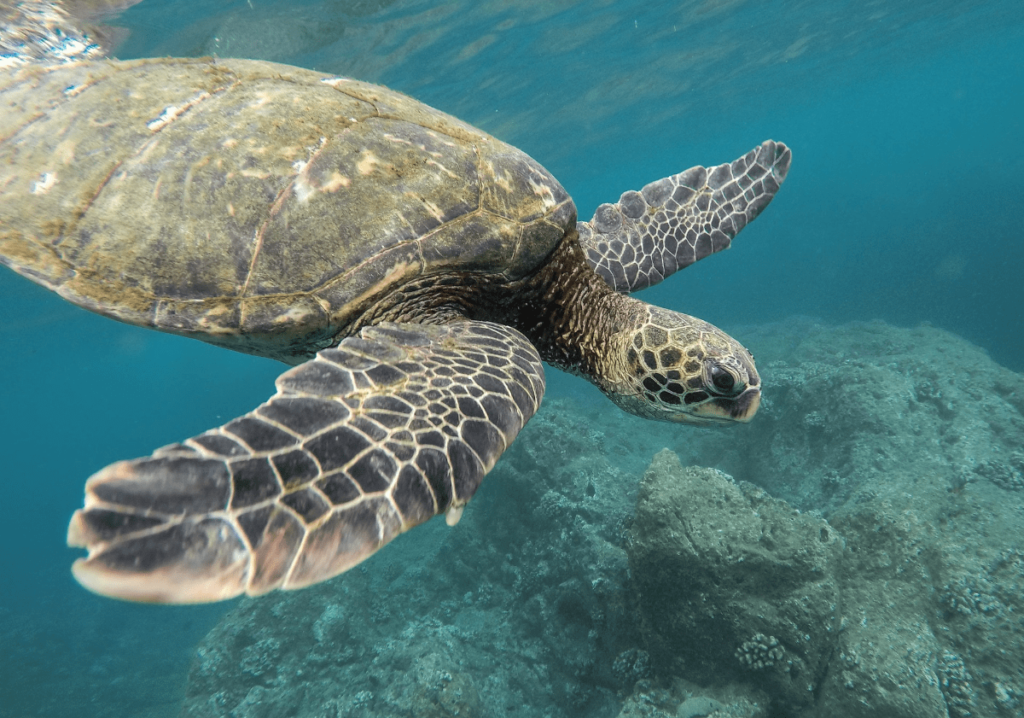
- Description: Sea turtles are ancient mariners known for their long migrations between feeding and nesting grounds. There are several species of sea turtles, each with unique adaptations for marine life. They are vital for maintaining the health of marine ecosystems, including seagrass beds and coral reefs.
- Scientific Name: Various species including Chelonia mydas (Green Turtle) and Caretta caretta (Loggerhead Turtle).
- Family Name: Cheloniidae
- Type: Reptile
- Habitat: Oceanic and coastal waters, including coral reefs and seagrass beds.
- Diet: Varies by species; includes jellyfish, crustaceans, and seagrass.
- Conservation Status: Various species, many are Endangered.
- Threats: Habitat loss, climate change, poaching, pollution, and bycatch.
- Current Population Estimates: Variable by species; many populations are critically low.
- Conservation Efforts: Nesting site protection, reduction of bycatch, and international agreements to safeguard habitats.
12. Tiger
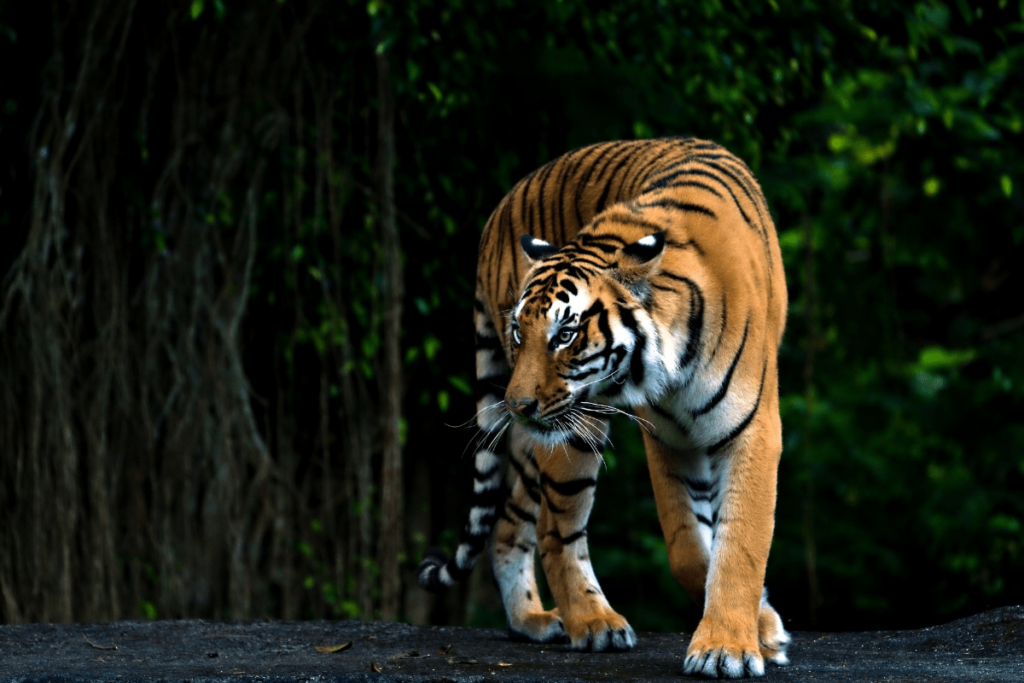
- Description: Tiger is one of the Largest Cat Species in the World and are known for their distinctive orange coat with black stripes. They are solitary hunters with powerful limbs and a strong bite. Tigers inhabit various forested regions across Asia, from the Russian Far East to the Indian subcontinent.
- Scientific Name: Panthera tigris
- Family Name: Felidae
- Type: Mammal
- Habitat: Various types of forests, including tropical rainforests and temperate woodlands.
- Diet: Carnivore; primarily ungulates, but will also hunt smaller mammals and birds.
- Conservation Status: Endangered
- Threats: Habitat loss, poaching for their fur and body parts, and human-wildlife conflict.
- Current Population Estimates: Fewer than 4,000 individuals.
- Conservation Efforts: Anti-poaching initiatives, habitat protection, and wildlife corridors to reduce human-wildlife conflicts.
13. Whale
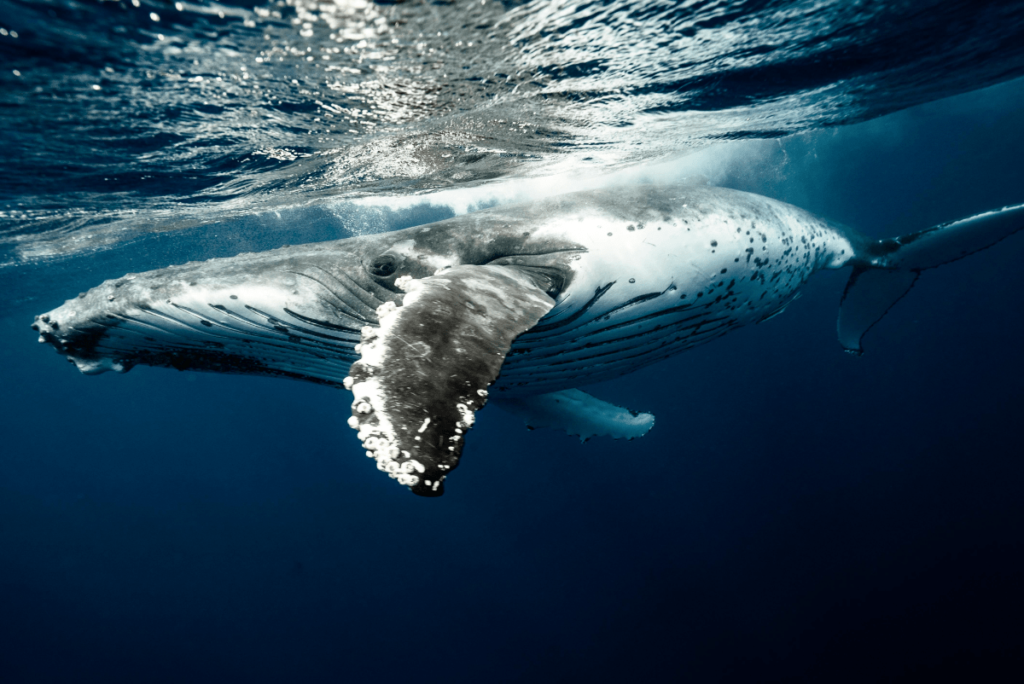
- Description: Whales are large marine mammals that include species such as the blue whale, humpback whale, and sperm whale. They are known for their impressive size and complex vocalizations. Whales play a crucial role in the marine ecosystem by influencing nutrient cycles and food chains.
- Scientific Name: Various species including Balaenoptera musculus (Blue Whale) and Megaptera novaeangliae (Humpback Whale).
- Family Name: Cetidae
- Type: Mammal
- Habitat: Oceans and seas worldwide.
- Diet: Varies by species; includes krill, plankton, and small fish.
- Conservation Status: Various species, many are Endangered.
- Threats: Commercial whaling, ship strikes, entanglement in fishing gear, and climate change.
- Current Population Estimates: Varies widely by species.
- Conservation Efforts: International whaling bans, marine protected areas, and research programs to monitor and protect whale populations.
14. Whale Shark
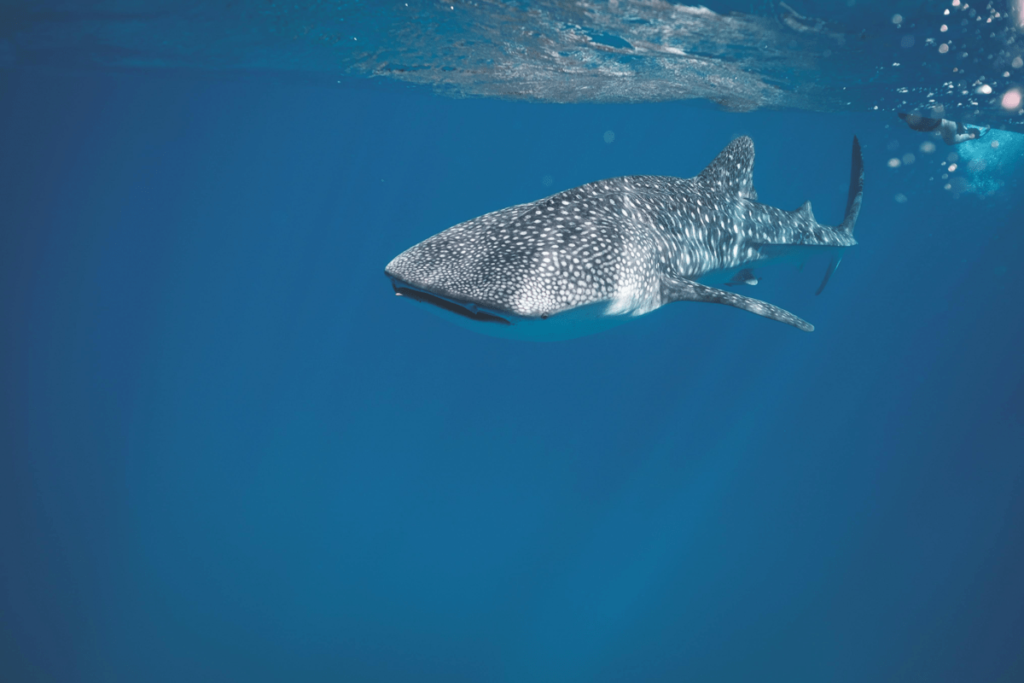
- Description: The whale shark is the largest species of shark and the largest fish in the ocean. Despite their size, whale sharks are gentle giants that feed primarily on plankton and small fish. They are known for their distinctive pattern of white spots and stripes on their dark gray skin.
- Scientific Name: Rhincodon typus
- Family Name: Rhincodontidae
- Type: Fish
- Habitat: Warm oceanic waters and coastal areas.
- Diet: Filter feeder; primarily plankton, small fish, and crustaceans.
- Conservation Status: Endangered
- Threats: Bycatch in fishing gear, collision with boats, and habitat degradation.
- Current Population Estimates: Not well known; estimated to be in decline.
- Conservation Efforts: Marine protected areas, regulations to prevent bycatch, and research to better understand their migratory patterns.
15. Indus River Dolphin
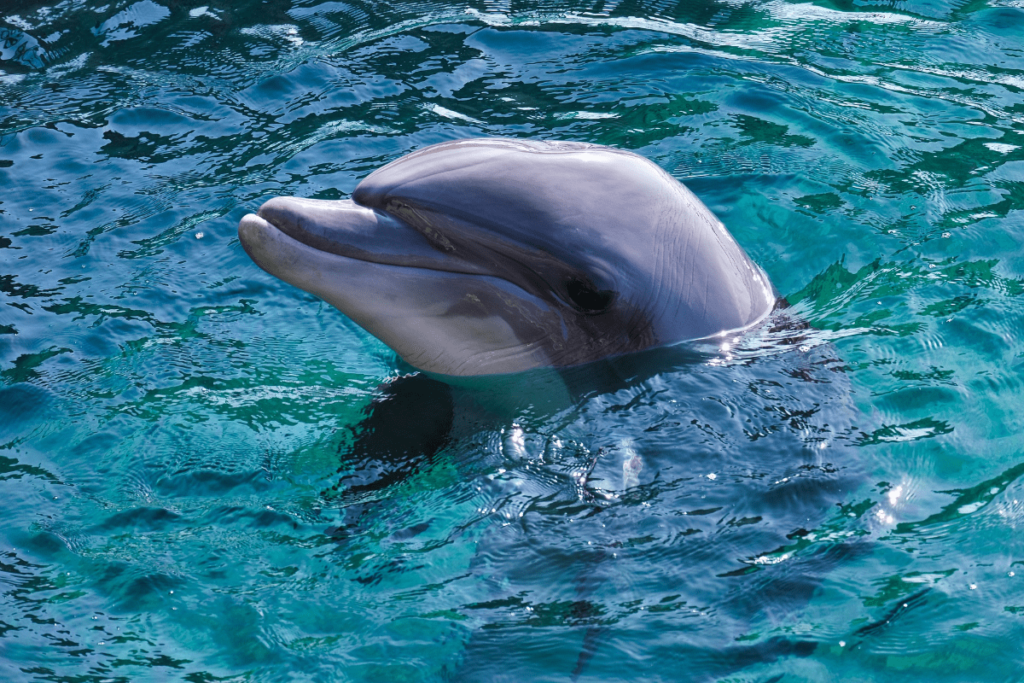
- Description: The Indus river dolphin is a rare freshwater dolphin found only in the Indus River in Pakistan. They are characterized by their long, slender bodies and distinctive beak. Adapted to life in murky river waters, these dolphins have poor eyesight but highly developed echolocation abilities.
- Scientific Name: Platanista gangetica minor
- Family Name: Platanistidae
- Type: Mammal
- Habitat: Freshwater rivers, specifically the Indus River and its tributaries.
- Diet: Carnivore; primarily fish.
- Conservation Status: Critically Endangered
- Threats: Habitat loss due to damming and irrigation, water pollution, and accidental entanglement in fishing gear.
- Current Population Estimates: Fewer than 1,000 individuals.
- Conservation Efforts: Protection of riverine habitat, regulation of fishing practices, and efforts to increase public awareness and support for conservation.
Check out How Smart Dolphins Really Are
Top 15 Endangered Animals (TABLE):
| Common Name | Scientific Name | Family Name | Type | Habitat | Diet | Threats | Current Population Estimates | Conservation Efforts |
|---|---|---|---|---|---|---|---|---|
| Asian Elephant | Elephas maximus | Elephantidae | Mammal | Tropical and subtropical forests, grasslands, and scrublands | Herbivore; grasses, fruits, bark, leaves | Habitat loss, human-wildlife conflict, poaching | Fewer than 50,000 | Protected areas, anti-poaching laws, conflict mitigation |
| Blue Whale | Balaenoptera musculus | Balaenopteridae | Mammal | Deep ocean waters | Carnivore; krill | Commercial whaling, ship strikes, entanglement | 10,000-25,000 | International whaling bans, marine protected areas |
| African Wild Dog | Lycaon pictus | Canidae | Mammal | Savannas, grasslands, and open woodlands | Carnivore; ungulates | Habitat fragmentation, human-wildlife conflict, disease | Fewer than 6,000 | Habitat restoration, anti-poaching initiatives |
| Chimpanzee | Pan troglodytes | Hominidae | Mammal | Tropical forests, savannas, and woodlands | Omnivore; fruits, leaves, insects | Habitat loss, poaching, diseases | 150,000-250,000 | Protected areas, anti-poaching measures, disease management |
| Galápagos Penguin | Spheniscus mendiculus | Spheniscidae | Bird | Galápagos Islands | Carnivore; fish, crustaceans | Climate change, habitat destruction, invasive species | 1,500-2,000 | Nesting site protection, invasive species control |
| Green Turtle | Chelonia mydas | Cheloniidae | Reptile | Coastal and marine environments | Herbivore; seagrass, algae | Habitat loss, pollution, climate change, poaching | ~200,000 | Nesting site protection, reduction of bycatch |
| Monarch Butterfly | Danaus plexippus | Nymphalidae | Insect | Milkweed fields, meadows, and forest clearings | Herbivore; milkweed, nectar | Habitat loss, pesticide use, climate change | Fewer than 30 million | Habitat restoration, planting milkweed, pesticide reduction |
| Mountain Gorilla | Gorilla beringei beringei | Hominidae | Mammal | Montane and subalpine forests | Herbivore; leaves, stems, fruits | Habitat destruction, poaching, disease | Approximately 1,000 | Anti-poaching patrols, habitat protection, veterinary care |
| Red Panda | Ailurus fulgens | Ailuridae | Mammal | Temperate forests in the Himalayas and China | Herbivore; bamboo, fruits, acorns | Habitat loss, poaching, climate change | Fewer than 10,000 | Protected areas, anti-poaching measures, habitat restoration |
| Sea Lion | Zalophus spp. | Otariidae | Mammal | Coastal regions | Carnivore; fish, squid | Pollution, habitat destruction, entanglement | ~250,000 | Marine protected areas, legislation to reduce bycatch |
| Sea Turtle | Various species | Cheloniidae | Reptile | Oceanic and coastal waters | Varies by species; includes jellyfish, crustaceans | Habitat loss, climate change, poaching, pollution | ~200,000 | Nesting site protection, reduction of bycatch |
| Tiger | Panthera tigris | Felidae | Mammal | Various types of forests | Carnivore; ungulates, smaller mammals, birds | Habitat loss, poaching, human-wildlife conflict | Fewer than 4,000 | Anti-poaching initiatives, habitat protection |
| Whale | Various species | Cetidae | Mammal | Oceans and seas worldwide | Varies by species; includes krill, plankton, small fish | Commercial whaling, ship strikes, entanglement | ~60,000 | International whaling bans, marine protected areas |
| Whale Shark | Rhincodon typus | Rhincodontidae | Fish | Warm oceanic waters and coastal areas | Filter feeder; plankton, small fish | Bycatch, collision with boats, habitat degradation | ~50,000 | Marine protected areas, regulations to prevent bycatch |
| Indus River Dolphin | Platanista gangetica minor | Platanistidae | Mammal | Freshwater rivers, specifically the Indus River and its tributaries | Carnivore; primarily fish | Habitat loss, pollution, accidental entanglement | Fewer than 1,000 | Protection of riverine habitat, regulation of fishing practices |
Endangered Species List as per 2024 Survey.
Source: World Wildlife Fund
- African savanna elephant
- African Wild Dog
- Asian Elephant
- Black-footed Ferret
- Blue Whale
- Bluefin Tuna
- Bonobo
- Bornean Elephant
- Chimpanzee
- Fin Whale
- Galápagos Penguin
- Ganges River Dolphin
- Green Turtle
- Hector’s Dolphin
- Humphead Wrasse
- Indian Elephant
- Indus River Dolphin
- Irrawaddy Dolphin
- Monarch Butterfly
- Mountain Gorilla
- North Atlantic Right Whale
- Red Panda
- Sea Lions
- Sea Turtle
- Sei Whale
- Sri Lankan Elephant
- Tiger
- Whale
- Whale Shark
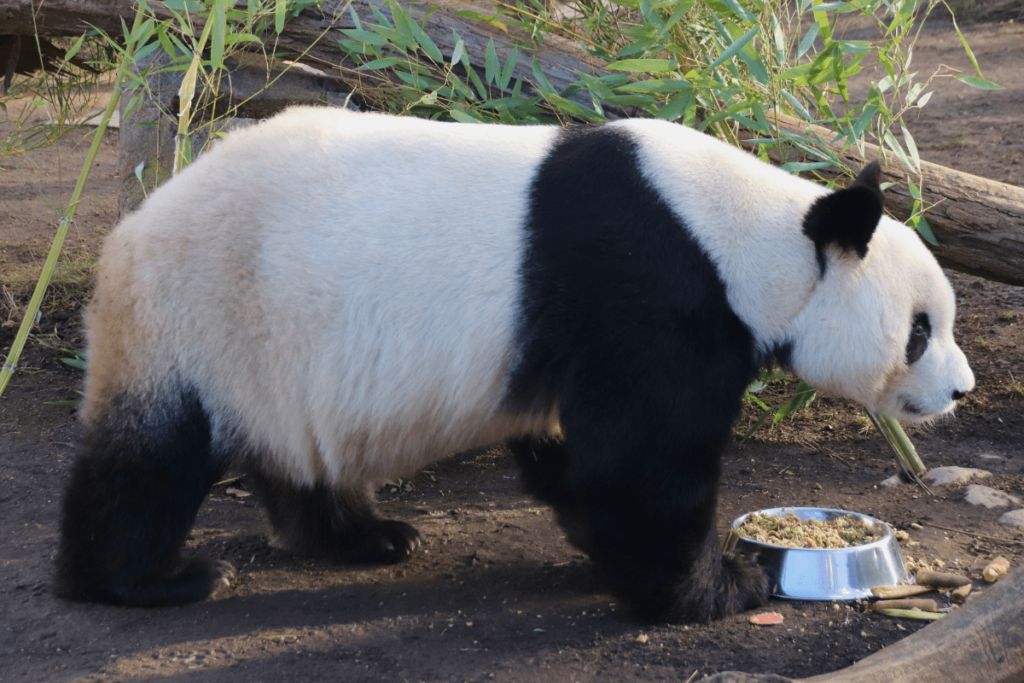
Frequently Asked Questions:
What is the most endangered species in the world?
The most endangered species can vary, but some of the most critically endangered species include the Blue Whale, Tiger, and Indian Elephant.
How many endangered species are there?
There are thousands of endangered species worldwide. The exact number fluctuates as assessments and classifications are updated, but it’s estimated that over 28,000 species are currently listed as threatened or endangered.
What can individuals do to help endangered species?
Individuals can help by supporting conservation organizations, reducing their carbon footprint, avoiding products that contribute to habitat destruction, and raising awareness about endangered species.
How does climate change affect endangered species?
Climate change affects endangered species by altering their habitats, affecting food availability, and increasing the frequency of extreme weather events. This can lead to habitat loss, reduced food sources, and increased vulnerability to disease.
Are there any successful stories of species recovery?
Yes, there are several successful conservation stories, such as the recovery of the bald eagle in the U.S., the giant panda in China, and the Arabian oryx, which was bred in captivity and reintroduced into the wild.
Are koala bears endangered species?
Yes, koalas are considered vulnerable due to habitat loss, disease, and the impacts of climate change. Their populations have been significantly affected by recent bushfires and habitat destruction.
Are pandas endangered species?
Yes, giant pandas are classified as vulnerable. Conservation efforts have helped stabilize their population, but they remain at risk due to habitat loss and low reproductive rates.
Why is the giant panda an endangered species?
Giant pandas are endangered primarily due to habitat loss and fragmentation, which reduces their access to bamboo, their primary food source. Their low reproductive rate also contributes to their endangered status.
Are dolphins endangered species?
Some dolphin species are endangered, such as the vaquita and the Ganges river dolphin, due to habitat loss, pollution, and bycatch in fishing gear.
Are killer whales endangered species?
Killer whales (orcas) are not currently listed as endangered, but some populations, such as the Southern Resident orcas, are critically endangered due to factors like prey depletion, pollution, and boat traffic.
Are red pandas endangered species?
Yes, red pandas are classified as endangered due to habitat loss, poaching, and climate change affecting their bamboo forests.
Why is the tiger endangered species?
Tigers are endangered primarily due to habitat loss, poaching for their bones and skin, and human-wildlife conflict. Their populations have dramatically declined due to these threats.
Are horseshoe crabs endangered species?
Horseshoe crabs are not currently listed as endangered, but they face threats from habitat loss and overharvesting for use in medical research and bait.
Are pandas an endangered species?
Yes, giant pandas are considered vulnerable, with ongoing efforts to protect and conserve their populations in the wild and in captivity.
Are praying mantis an endangered species?
Most praying mantis species are not considered endangered, but some specific species could be at risk due to habitat destruction and environmental changes.
Are puffins endangered species?
Some puffin species, like the Atlantic puffin, face threats from climate change, habitat loss, and overfishing, but they are not currently listed as endangered.
Are wolves endangered species?
Wolves are not universally endangered; however, certain populations, such as the red wolf in the U.S., are critically endangered due to habitat loss and persecution.
Are bald eagles endangered species?
Bald eagles were once endangered but have made a significant recovery thanks to conservation efforts. They are now listed as “Least Concern” by the IUCN.
Why is the orangutan an endangered species?
Orangutans are critically endangered due to habitat loss from deforestation for palm oil plantations, illegal pet trade, and human-wildlife conflict.
Are bats an endangered species?
Some bat species are endangered due to habitat loss, disease (such as white-nose syndrome), and human-related threats. Conservation efforts are crucial for their survival.
Are Canadian geese an endangered species?
Canadian geese are not considered endangered; they are widespread and abundant in North America, although their populations can fluctuate locally.
Are flamingos endangered species?
Flamingos are not universally endangered, but certain species, like the Andean flamingo, face threats from habitat loss and climate change.
Are grizzly bears endangered species?
Grizzly bears are not currently listed as endangered, but some populations are considered threatened due to habitat loss and human-wildlife conflict.
Are orcas an endangered species?
Orcas are not universally endangered, but some populations, like the Southern Resident orcas, are critically endangered due to prey depletion, pollution, and other threats.
Why is the black-footed ferret an endangered species?
The black-footed ferret is critically endangered due to habitat loss, prey depletion (particularly prairie dogs), and disease. Conservation efforts are focused on habitat restoration and captive breeding.
Why is the red panda an endangered species?
The red panda is endangered due to habitat loss, poaching, and climate change. Conservation efforts aim to protect their habitat and reduce human-wildlife conflicts.
Why is the snow leopard an endangered species?
Snow leopards are endangered due to habitat loss, poaching for their fur, and retaliatory killings by herders. Conservation efforts focus on protecting their habitat and reducing human-wildlife conflict.
Are black panthers endangered species?
Black panthers, which are melanistic leopards or jaguars, are not classified as a separate species. Their conservation status depends on the species they are associated with—leopards or jaguars—which are both subject to various conservation statuses.
Are bumblebees endangered species?
Some bumblebee species are endangered due to habitat loss, pesticide use, and climate change. Conservation efforts include habitat restoration and protection.
Are Canadian geese endangered species?
Canadian geese are not endangered; they are common and widespread in North America. However, local populations can experience fluctuations due to environmental changes.
Are chimpanzees endangered species?
Yes, chimpanzees are endangered due to habitat loss, poaching, and disease. Conservation efforts are crucial to protect their habitats and reduce human-wildlife conflict.
Are chinchillas endangered species?
Yes, chinchillas are critically endangered due to habitat destruction and illegal pet trade. Conservation efforts are focused on habitat protection and sustainable practices.
Are eagles endangered species?
Some eagle species are endangered, such as the Bald Eagle, but many others are considered stable. Conservation efforts vary by species and include habitat protection and anti-poaching measures.
Are humpback whales endangered species?
Humpback whales are no longer considered endangered, but some populations are still at risk due to past whaling, ship strikes, and entanglement. Conservation efforts continue to protect their habitats.
Are kangaroos endangered species?
Kangaroos are not considered endangered; they are abundant in Australia. However, some local populations can be affected by habitat loss and hunting.
Are kiwis endangered species?
Yes, kiwis are considered vulnerable due to habitat loss, predation by introduced species, and human activities. Conservation efforts focus on habitat protection and predator control.
Are moose an endangered species?
Moose are not considered endangered. However, they face threats from habitat loss, hunting, and diseases. Conservation efforts ensure their populations remain stable.
Are orangutans endangered species?
Yes, orangutans are critically endangered due to habitat destruction, illegal pet trade, and conflicts with humans. Conservation efforts include habitat protection and anti-poaching measures.
Are peacocks endangered species?
Peacocks are not considered endangered; they are widespread and commonly seen in captivity. However, their wild populations face threats from habitat loss and hunting.
Are toucans endangered species?
Some toucan species are endangered due to habitat loss and the pet trade. Conservation efforts focus on protecting their tropical rainforest habitats.
Are elephants endangered animals?
Yes, elephants are considered endangered due to habitat loss, poaching for ivory, and human-wildlife conflict. Conservation efforts include anti-poaching measures and habitat protection.
Are platypus endangered animals?
Platypuses are not currently classified as endangered, but they face threats from habitat destruction, water pollution, and climate change. Conservation efforts are important to monitor their populations.
Conclusion
The importance of conservation efforts cannot be overstated when it comes to preserving the world’s endangered species. Each species plays a vital role in maintaining the balance of its ecosystem, and their decline can have far-reaching consequences on biodiversity and environmental health. Protecting these species requires a concerted effort from individuals, communities, and governments alike. By supporting conservation programs, advocating for sustainable practices, and raising awareness, we can all contribute to ensuring the survival of these remarkable animals.
We encourage you to get involved in protecting endangered species by supporting conservation organizations, participating in local clean-up events, and spreading awareness about the importance of wildlife protection. Every action counts in the fight to preserve our planet’s biodiversity for future generations.
